Boasting a history over 400 years old, Kyo ware/Kiyomizu ware refers to pottery produced around Kyoto’s Higashiyama and Yamashina areas, as well as the city of Uji. The biggest characteristic of these wares is that unlike the Shigaraki or Imari-Arita styles, it essentially has no rules when it comes to its production. Artisans are free to use whatever clay, potter’s stone, or technique that they like. That’s why every piece of Kyo ware/Kiyomizu ware is a uniquely individual expression of the artist. Since Kyoto was once the capital of Japan, the wares are known for being grand and extraordinarily ornate. Today, it is a Ministry of Economy, Trade and Industry-designated traditional Japanese craft.
The History of Kyo Ware/Kiyomizu Ware
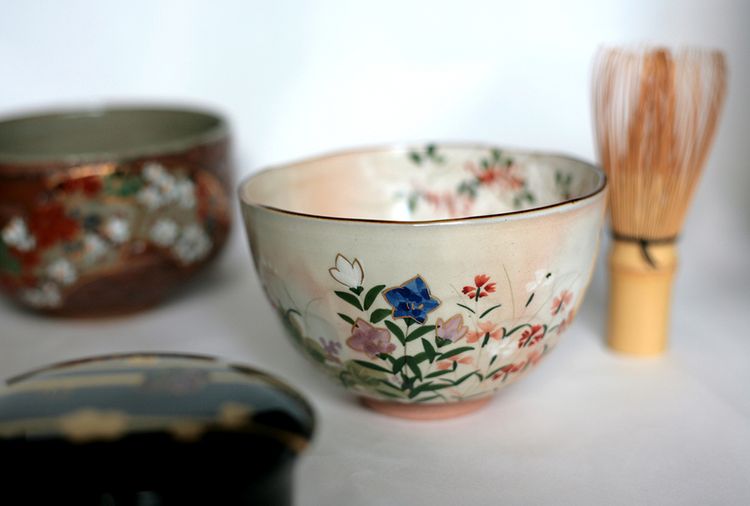
The current form of Kyo ware/Kiyomizu ware (“Kyo-yaki/Kiyomizu-yaki”) emerged between the Momoyama Period (16-17th centuries) to the beginning of the Edo Period (1603-1868). A merchant in Kyoto invited artisans from all over the country to create tea ceremony utensils and tea cups. These items eventually became gifts for nobles and feudal lords.
Around 1635, kilns were constructed in various parts of Kyoto to produce Kyo ware, Awataguchi ware (Awataguchi-yaki), Yasaka ware (Yasaka-yaki), and Mizoro ware (Mizoro-yaki). It was around this time when the art of Kyo ware/Kiyomizu ware became established. Ninsei Nonomura and Kenzan Ogata are two individuals who enhanced the artistic qualities of Kyo ware/Kiyomizu ware.
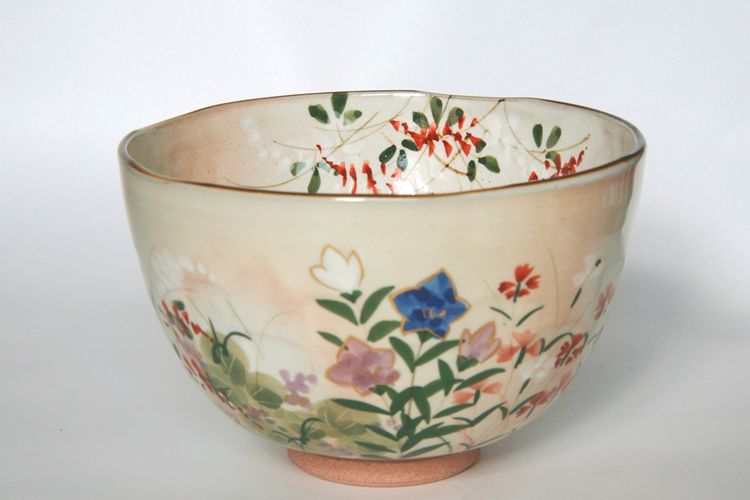
Ninsei, known as one of the best Kyo ware potters, had an excellent technique for drawing patterns on vessels. A lot of the Kyo ware vessels that are currently designated as national treasures or important cultural properties have been made using techniques created by Ninsei. These wares were gifted to the Tokugawa shogunate during the Edo Period, and continue to be highly regarded today.
Alongside Ninsei was Kenzan Ogata (1663-1743), a skillful Kyo ware artisan. He gained popularity for his innovative technique of adding bold drawings and characters, which was unprecedented in Kyo ware.
Following Ninsei and Kenzan, other master artisans of Kyo ware/Kiyomizu ware emerged, including Rokubei Kiyomizu I (1738-1799), who established a kiln in Gojozaka, Kyoto in 1771; Dohachi Takahashi I; and Ensei Okuda (1753-1812).
Located before the gates of Kiyomizu-dera Temple, Gojozaka in Kyoto—where a kiln was established by Rokubei Kiyomizu I—became a thriving area. Pottery produced in this area soon became souvenirs for worshipers and gained popularity among the public.
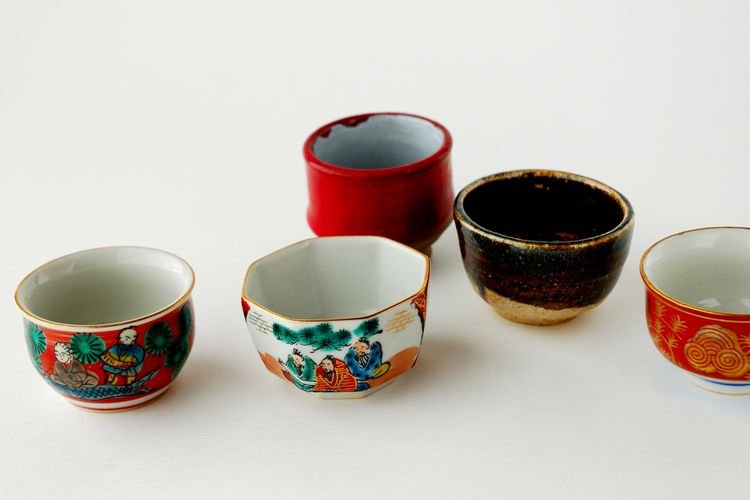
When the Meiji Era began in 1868 and the capital moved from Kyoto to Tokyo, Kyo ware/Kiyomizu ware kilns closed one after another. However, Kyo ware artisans sought to survive by exporting porcelain that had gorgeous golden drawings to Europe and the United States, where Japonisme (the influence of Japanese art, culture, and aesthetics in the West) was gaining popularity.
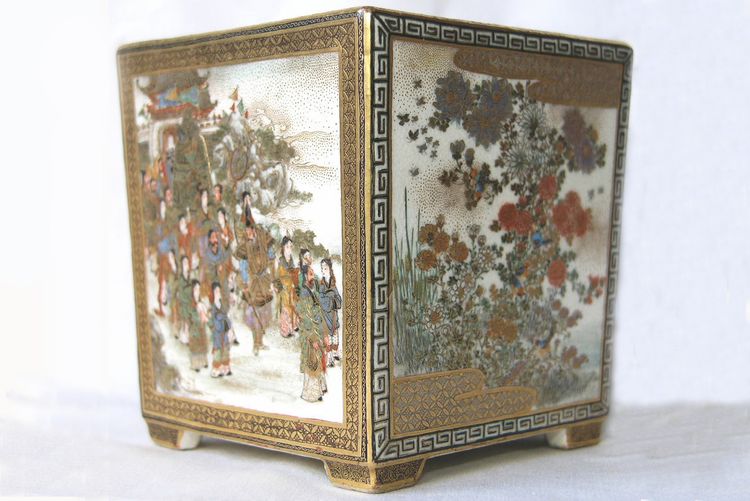
While mass production by machines began across the country after the 20th century, distinguished artisans moved to Kyoto, where they continued to produce tea utensils and other items that required a high degree of skill.
After the Pacific War, Kyo ware/Kiyomizu ware underwent further developments by Rokubei Kiyomizu VI and Yaichi Kusube. Many potters trained under these two masters, and they provided the foundation for the Kyo ware/Kiyomizu ware that we see today.
The Characteristics of Kyo Ware/Kiyomizu Ware
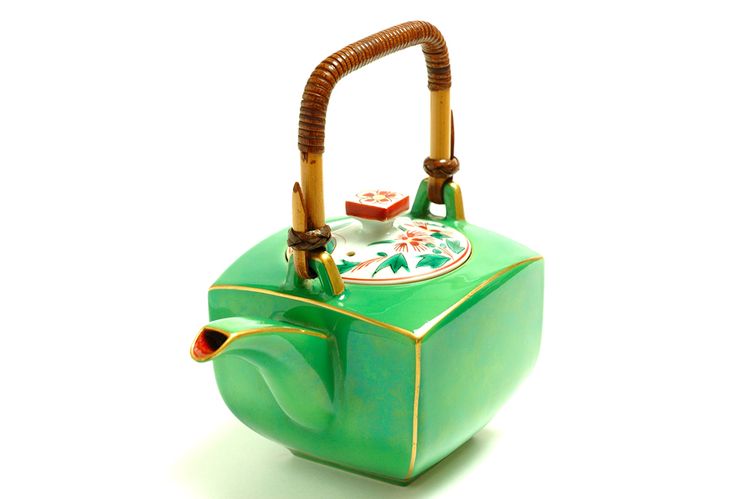
Kyo ware/Kiyomizu ware are works of art that illustrate the scenery of the four seasons in Kyoto or feature drawings that bring good luck.
A lot of the vessels are made by using the technique wherein the clay is baked once before being painted. They are known for beautifully showcasing the individuality of each artist. On the other hand, there are artisans who specialize in copying the designs of master creators from the Edo Period, such as Kenzan and Ninsei.
As Kyoto was the capital of Japan for a long time, many Kyo wares/Kiyomizu wares were presented to tea masters, military leaders’ families, imperial families, and samurai families. Therefore, it can be said that Kyo ware/Kiyomizu ware hold a sense of luxury and are highly decorative, which are two characteristics that cannot be seen in other ceramics.
In addition, as skillful artisans from all over the country gathered in Kyoto, the characteristics of various ceramics are mixed together in Kyo ware/Kiyomizu ware. That said, one unique characteristic is that most of the production process is done by hand, and that none of the works are mass produced.
Therefore, each product is very unique and rare. Oftentimes, if you miss an opportunity, you will never be able to find the same product again. This is another reason why Kyo ware/Kiyomizu ware is so popular.
Kyo Ware/Kiyomizu Ware Today

Today, Kyo ware/Kiyomizu ware is in danger of disappearing as the number of artisans and kilns are declining due to plummeting sales. To combat this, Kyo ware/Kiyomizu ware artisans, chambers of commerce, and designers have been seriously exploring future possibilities to keep the craft going.
These efforts have led to Kyo ware/Kiyomizu ware being actively employed at hotels and other facilities that are being built rapidly in response to the increasing number of foreign tourists.

When attempting to expand overseas, Kyo ware/Kiyomizu ware was highly praised for not being mass-produced. To develop this characteristic further, and by collaborating with architectural designers, recently, new products such as Kyo ware/Kiyomizu ware lighting equipment and wash basins have been produced.
Featured Products
Hibiki Glazed Yunomi

This exquisite teacup featuring a watery-blue gradation achieved through masking is the work of Shigeo Takemura of the Dainichi Kiln, a famous potter known for making his own natural glaze from the plants he himself grows.
Flower Crystal Name Plate (5-Piece Set)


This is a 5-piece small plate set featuring the beautiful “hanakessho” pattern reminiscent of blooming flowers. You can get a better look at the yellow one in the bottom picture and see exactly how beautiful the flower crystal pattern really is and how it changes depending on how the light hits it. No two plates ever share the same design pattern.
Nebula Tenmoku Cup

The deep indigo blue coloring of this cup is quite striking. The piece is a reproduction of nebula tenmoku, a style that originated over 800 years ago in Jianyao, Fujian Province, in the south of China, whose production process still largely remains a mystery to us. The teacup is very versatile and can also be used to drink sake. And because it’s so beautiful, it can even be used as part of your home’s interior design. You can truly use it however you want.
▶ Click here to browse Kyo/Kiyomizu Ware items!
Related articles:
▶ Traditional Japanese Crafts: The Complete Guide to Japanese Ceramics
▶ The Complete Guide to Traditional Japanese Crafts
▶ 5 Japanese Tea Sets You Can Use to Get the Quintessential Japanese Tea Experience
If you want to give feedback on any of our articles, you have an idea that you'd really like to see come to life, or you just have a question on Japan, hit us up on our Facebook, Twitter, or Instagram!
*These products may not be able to be shipped to certain countries. Please see the retailer's website for more information.
The information in this article is accurate at the time of publication.
